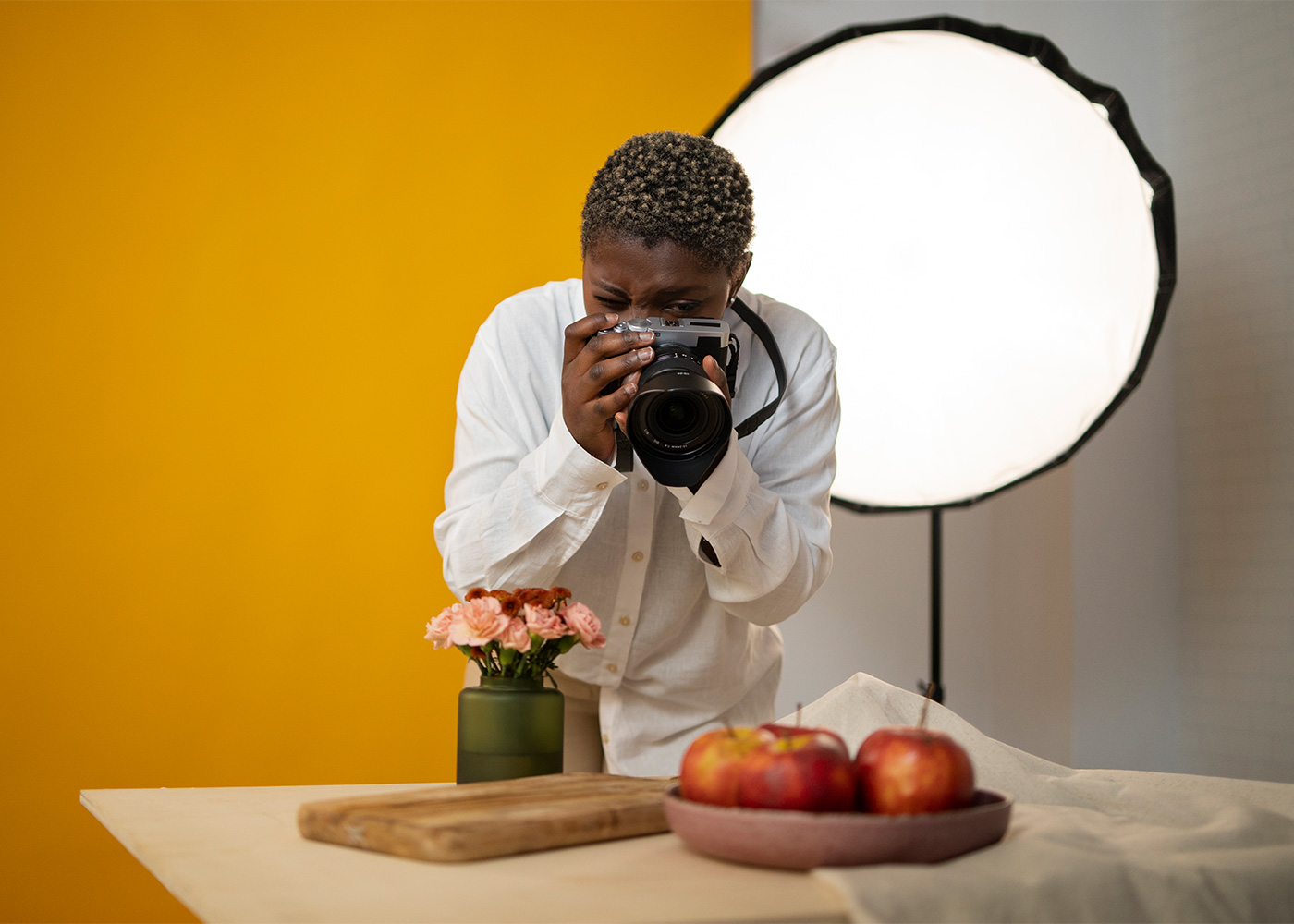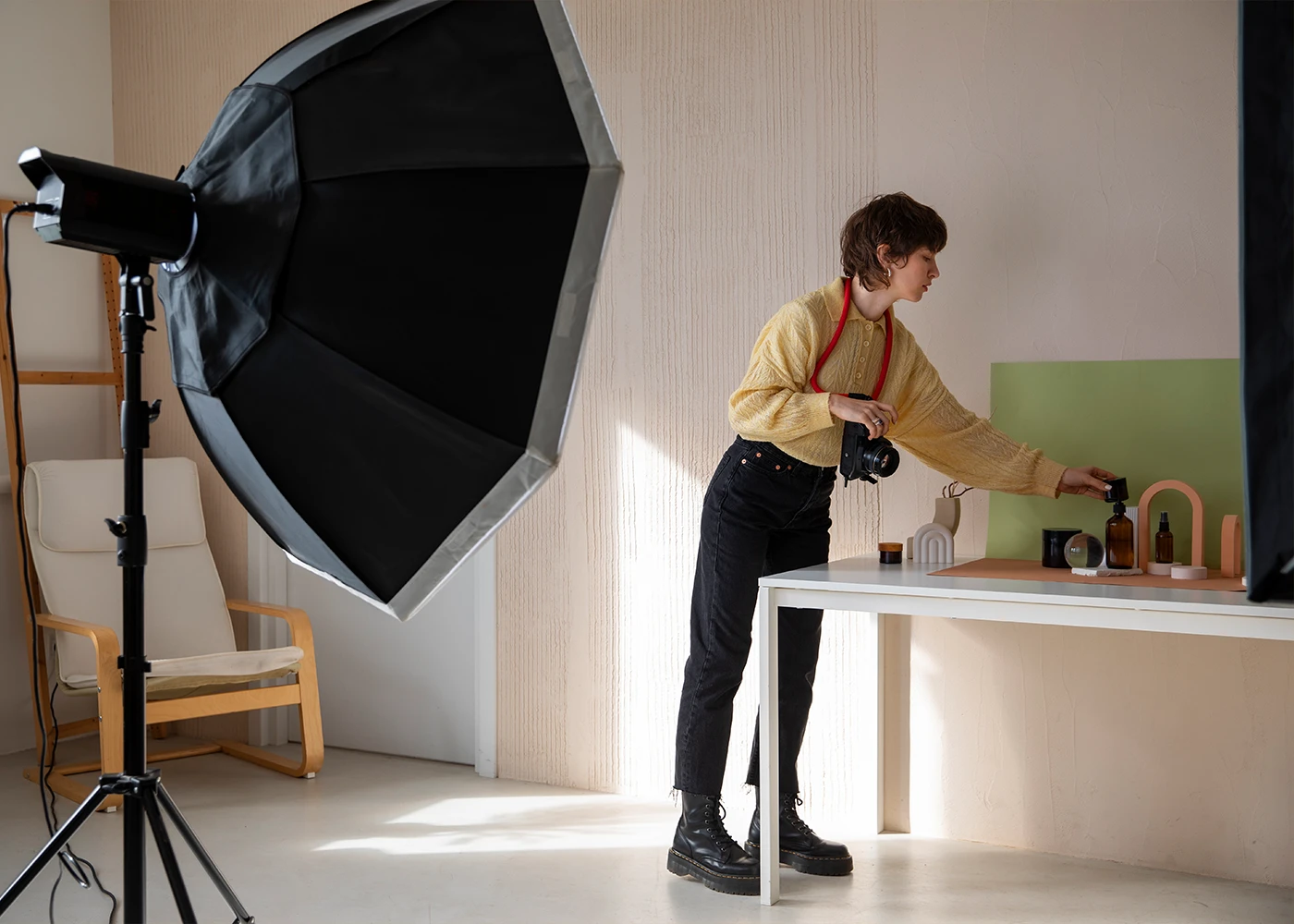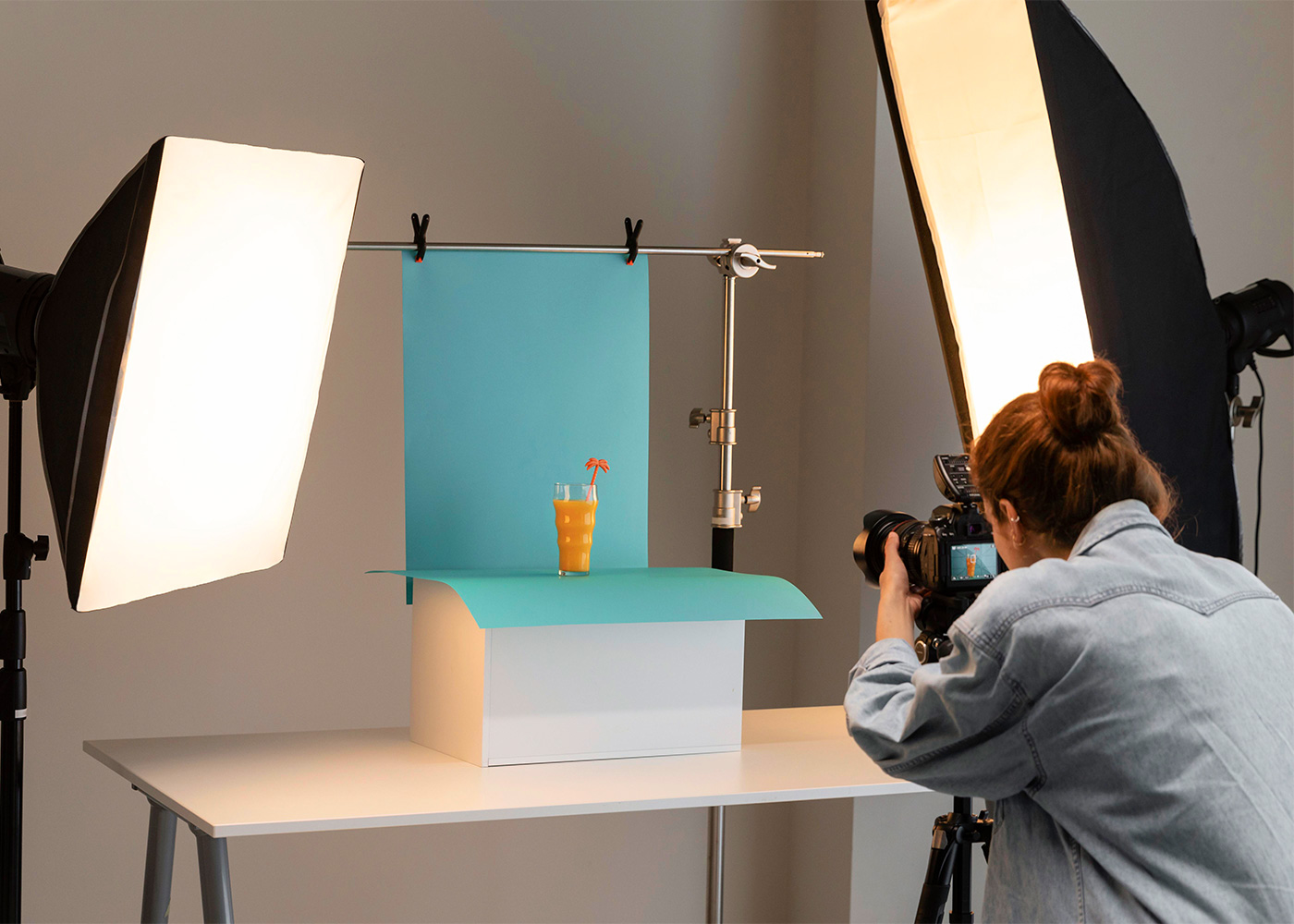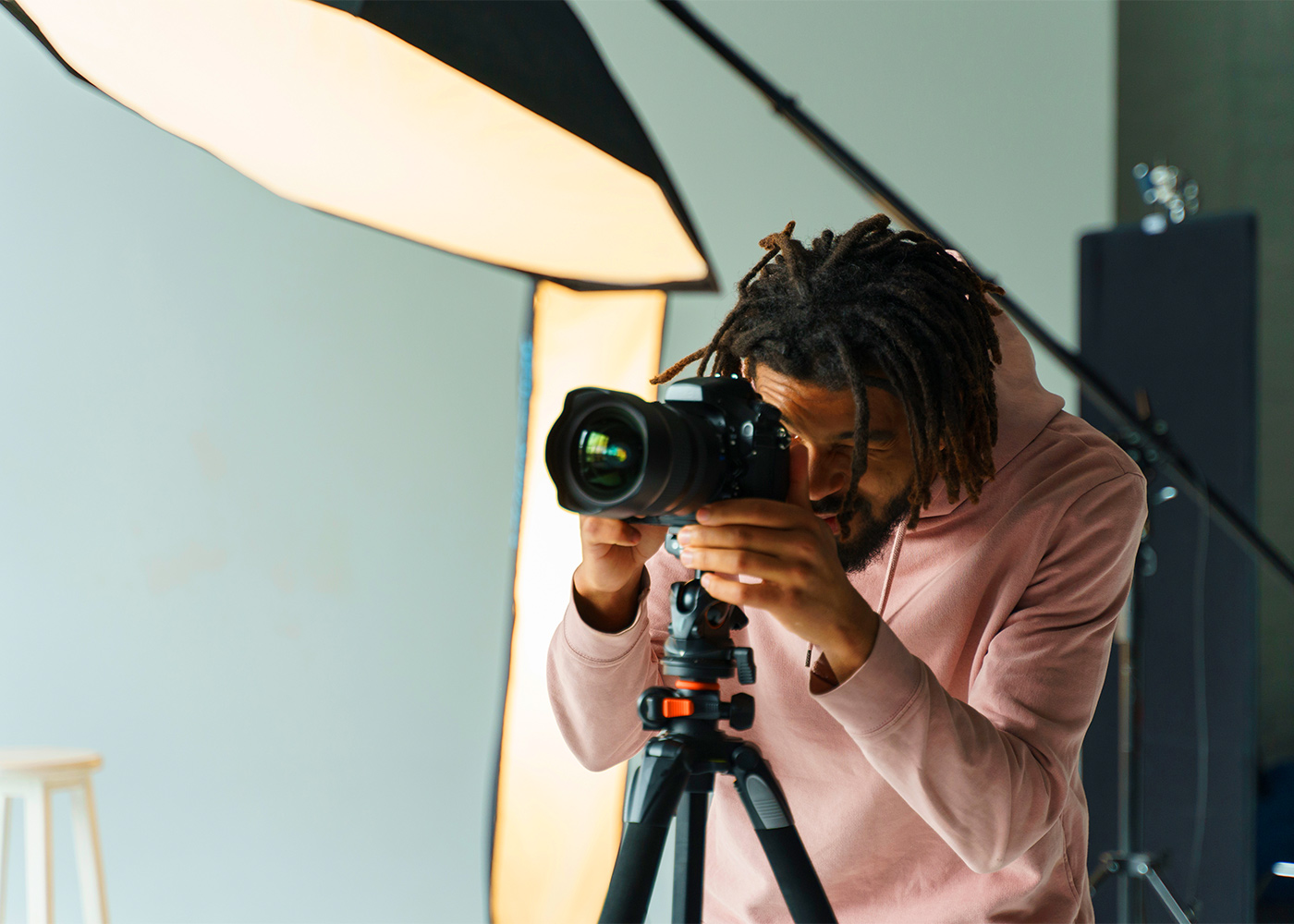Speaking Through Images: The Art of Advertising Photography

Advertising photography
Let’s unveil a world of creativity and imagination, where life’s moments transform into beautiful works of art. Advertising photography is an art that establishes connections with various artistic disciplines, painting the world of architecture, design, human emotions, and products before the eyes of the audience.
In every advertising image, there lies an intelligently hidden story. Advertising photographers view their surroundings with a different and innovative perspective, claiming the talent to craft these stories. They create a vivid canvas that showcases passions, products, human sentiments, and the vibrant intricacies of life.
Advertising photography is like a gardener who shines radiant and colorful blossoms in the arid and lifeless realm of advertisements. Magically, advertising images emerge from creative and dream-inducing ideas, illuminating a new and brighter world for the viewers.
Recognized as artists, advertising photographers add emotions and the enchantment of advertising art through their technical and artistic skills. They skillfully employ light, color, color palettes, and material compositions to create exceptional and unparalleled images that captivate the emotions of the audience.
In an era where advertising has transformed into captivating spectacles, advertising photography plays a vital role. This art form offers a window into a fascinating and adventurous world, a realm where all colors and emotions coexist harmoniously. As viewers, we share our joys by gazing at these inspiring images and venture deeper into each detail within the picture for a more profound experience.
If you are looking for exciting ideas for creating advertising photos, be sure to visit the portfolio page of Studio NextShot.
Advertising Photography: A Magical Realm of Ideas and Dreams.
Advertising photography represents the wonder and attractiveness we encounter in our daily lives. The language of art and beauty in these images infuses freshness and diversity into our lives, remaining vividly in our minds, interweaving from one image to another, transforming into cherished memories. This art challenges our beliefs and makes our ultimate desires and aspirations come true.
Just as each raindrop carries a world within itself, every advertising image embraces a world of ideas, dreams, and perceptions. So, welcome to the mesmerizing world of advertising photography, where each image showcases a new page of life and brings a captivating smile to our lips from the possibilities of our future.

Types of Advertising Photography
Advertising photography encompasses a captivating world of visual storytelling. From showcasing products in all their glory to tantalizing food spreads that make your taste buds dance, this genre of photography breathes life into marketing campaigns. Picture-perfect products are meticulously captured in studios or real-life settings, a visual symphony of allure designed to captivate audiences.
Here are the types of advertising photography:
· Product Photography
Product Photography involves presenting products in an appealing and visually attractive manner, either in a studio or real-life settings, with the aim of enticing potential customers.
· Food Photography
Food Photography focuses on capturing mouthwatering images of food and beverages, stimulating viewers’ appetites and creating a strong desire to taste the showcased items.
· Fashion Photography
Fashion Photography showcases clothing, accessories, and models in a stylish and artistic way to promote fashion trends and brands.
· Outdoor Photography
Outdoor Photography captures products or services in natural outdoor environments, emphasizing adventure, outdoor activities, and a connection with nature.
· Lifestyle Photography
Lifestyle Photography depicts real-life moments and individuals using products or services, demonstrating how they seamlessly fit into customers’ daily lives.
· Service Photography
Service Photography portrays professionals offering services like healthcare, beauty treatments, or consulting, highlighting their expertise and skills.
· Industrial Photography
Industrial Photography captures images of industrial processes, machinery, and facilities, showcasing innovations and technological advancements.
· Advertising Display Photography
Advertising Display Photography involves creating captivating images for billboards, posters, and other advertising displays, aiming to capture the attention of passersby in public spaces.
These diverse forms of advertising photography cater to various industries and target audiences, each with the objective of effectively conveying messages and promoting products or services.

Advantages of Advertising Photography
Unveiling the Visual Symphony: Key Points in Advertising Photography
Advertising photography dances its way into our hearts, instantly captivating and captivating us with its mesmerizing visuals. These high-quality images possess the extraordinary talent of conveying intricate messages and emotions with a single glance.
· Brand Identity:
Like a master artist, well-crafted photography brushes strokes of brand identity onto the canvas of our minds. Consistent use of visuals that harmonize with the brand’s essence creates an unforgettable and distinctive brand persona.
· The Power of Visual Narratives:
With a single snap, photography weaves a thousand tales, narrating stories that speak directly to our hearts. Emotions flow freely, making profound connections with the audience, and leaving words in awe of their eloquence.
· Illuminating Products with a Radiant Glow in Advertising Photography
Advertising photography becomes a spotlight, casting a radiant glow upon products, accentuating their features and virtues. As we gaze upon these visual masterpieces, we envision the product gracefully intertwining with our lives, urging us to make it our own.
· An Engagement Extravaganza:
Visual content reigns supreme, and photography takes the throne, commanding attention and evoking fascination. As marketing campaigns, websites, and social media posts don these mesmerizing images, the audience is irresistibly drawn to participate and interact.
· A Chameleon of Versatility:
Advertising photography adorns itself in versatility, adroitly adapting to various marketing realms – from the printed pages of magazines to the digital landscapes of social media, and everywhere in between.
· Etching Memories in Time:
Like a sculptor-shaping stone, powerful visuals chisel lasting impressions in our memories. With each glance, the brand and product resurface, forever etched in our minds, ready to be called upon when needed.

Impacts of Advertising Photography
Advertising photography has a significant impact on the audience; these powerful images help create emotional connections with viewers, increase brand awareness, and enhance brand recognition.
The Impact of Advertising Photography on Customer Perception
High-quality and aesthetically pleasing photography positively impacts how consumers perceive a brand. Professional visuals convey professionalism and credibility.
Emotional Connection
Photography can evoke emotions, which influences consumer behavior. Emotional connections to a brand drive customer loyalty and repeat business.
Increased Conversions
Effective advertising photography can drive conversions by compelling consumers to take action. It can lead to more clicks, inquiries, and ultimately, more sales.
Brand Awareness
Eye-catching visuals help in spreading brand awareness. Shareable and memorable images can go viral, reaching a broader audience and increasing brand exposure.
Competitive Edge
In a crowded market, striking photography gives a competitive edge. It helps a brand stand out, making it more memorable than competitors.
The Influence of Advertising Photography on Social Media Platforms
On social media platforms, where visual content is king, photography can significantly impact engagement, reach, and shareability.
Global Reach
Visuals transcend language barriers, allowing brands to connect with a global audience. Photography facilitates communication without the need for extensive translations.
In conclusion, advertising photography plays a pivotal role in modern marketing strategies. Its advantages lie in its ability to convey powerful messages, create emotional connections, and enhance brand identity. The impacts of advertising photography encompass improved engagement, conversions, and brand recognition, solidifying its position as an essential element in successful advertising campaigns.

how to Crafting impactful advertising photography
Carefully consider the objectives set forth by the client for the project. Analyze how the client desires their product to be perceived by the audience. Is it intended to be seen as a luxurious item, environmentally friendly, a symbol of status, or a trendy and must-have product? This crucial factor significantly influences your creative process as a photographer. Your photograph needs to effectively convey the desired concept without solely relying on the product itself to deliver the message.
In simpler terms, when working on an advertising photography project, it is essential to understand the client’s vision for the product. The client’s goal is to create a specific perception of the product in the minds of potential customers. For example, if the product is a high-end luxury item, the photography should exude elegance and sophistication to match the desired image. If it’s an environmentally friendly product, the focus might be on showcasing its eco-friendly features and positive impact on the environment. For a trendy and must-have item, the photography should reflect a sense of excitement and desirability to attract a wide audience.
As a photographer, you play a vital role in shaping the narrative around the product. Your creative choices, including the composition, lighting, colors, and setting, should align with the client’s objectives. The photograph should evoke emotions and associations that reinforce the intended perception of the product.
In summary, understanding the client’s commission goals is fundamental in advertising photography. It guides your creative decisions to produce images that effectively communicate the desired concept and leave a strong impression on the audience. The photograph serves as a powerful tool to convey the product’s unique qualities and create a lasting impact in the minds of consumers.
Some concepts for advertising photography
For advertising photography, you can use various concepts that create the best emotions and connections with the audience. Some common concepts in advertising photography include:
Narrative Concept: Using images that convey a story or a specific point of view to establish a deeper connection with the audience.
Element-Based Concept: Focusing on one or several distinctive elements of the product or service that can play a central role in the image and capture the audience’s attention.
Creativity Concept: Incorporating creative ideas and imagery that trigger emotions in the audience and ensure the product stands out.
Contrast Concept: Using strong contrasts and comparisons in images to attract attention and demonstrate the product or service’s advantages over competitors.
Environmental Concept: Displaying the product or service in real or fantasy environments to create a stronger connection with the audience and showcase the product in real-life situations.
Modeling Concept: Using models to present the product or service in an attractive and captivating manner.
Ambiguity Concept: Employing images with a touch of ambiguity and mystery to spark the audience’s curiosity and motivate them to learn more about the product.
Furthermore, you can combine these concepts or create your own unique concepts for advertising photography. Selecting the appropriate concept based on the type of product or service and the campaign’s objectives can play a crucial role in the project’s success.

What knowledge does an advertising photographer need?
An advertising photographer needs a combination of technical skills, artistic talent, and business acumen to succeed in their profession. Here are some key areas of knowledge that an advertising photographer should possess:
· Photography Techniques:
A thorough understanding of camera settings, lighting techniques, composition, and exposure is crucial for capturing high-quality and visually appealing images.
· Product Knowledge:
Familiarity with different types of products and their unique selling points is essential to showcase them in the most attractive way possible.
· Conceptualization:
The ability to conceptualize and visualize ideas for advertising campaigns, and translate them into compelling visual images.
· Art Direction:
Collaborating with art directors and creative teams to bring their vision to life through photography.
· Post-Processing Skills:
Proficiency in using photo editing software like Adobe Photoshop or Lightroom to enhance and retouch images.
· Styling and Props:
Knowledge of styling techniques and selecting appropriate props to complement the products being photographed.
· Legal and Copyright Issues:
Understanding copyright laws, usage rights, and licensing agreements to protect their work and the rights of their clients.
· Marketing and Branding:
Familiarity with marketing principles and the ability to align their photography with the branding and advertising strategies of their clients.
· Communication and Client Management:
Strong communication skills to understand client needs, manage expectations, and collaborate effectively with clients and creative teams.
· Industry Trends:
Staying updated with current trends in advertising, photography, and visual communication to stay competitive and relevant in the industry.
· Business Management:
Knowledge of business aspects, such as pricing, contracts, invoicing, and marketing their services to attract clients and grow their photography business.
· Adaptability:
Being able to work in various settings, whether it’s a studio environment, on-location shoots, or in challenging outdoor conditions.
Overall, a successful advertising photographer needs to combine technical expertise with creativity, marketing savvy, and effective communication skills to create visually compelling images that effectively promote products, services, or brands.

Pro Tips for Powerful Advertising Photography
- These pro tips are essential considerations for successful advertising photography. When planning a photoshoot, it’s crucial to choose models whose appearance and demeanor reflect the characteristics of the target audience. This creates a relatable and captivating visual for the viewers, making it easier for them to connect with the product or service.
- Backgrounds and themes play a significant role in establishing a desired emotional connection with the audience. By selecting settings that mirror the aspirations and desires of the target demographic, the images become more appealing and impactful.
- Using depth of field is a powerful technique to draw attention to specific elements in the photograph. By blurring the background or foreground, the focus remains on essential aspects of the image, guiding the viewer’s gaze exactly where intended.
- Direct eye contact between models and the audience helps create a personal bond. This engagement encourages the viewers to feel involved and entices them to explore the product or service further.
- Appealing to emotions is a potent strategy in advertising photography. Themes that trigger nostalgia, memories, or future aspirations can evoke powerful emotions in the audience, making the images more memorable and relatable.
- Incorporating a compelling narrative can elevate the impact of the advertising campaign. When the audience can relate to the story depicted in the images, they are more likely to connect with the brand on a deeper level and potentially become loyal customers.
- By implementing these pro tips, advertisers can enhance the effectiveness of their advertising photography and achieve better results in connecting with their target audience.

The most important points of advertising photography include
Visual Appeal: Advertising photography must possess an attractive and attention-grabbing quality that captivates the audience and effectively communicates the intended message.
Product Focus: The primary goal of advertising photography is to showcase products or services in the best possible light, emphasizing their features, advantages, and unique selling points.
Creativity: Successful advertising photography often involves thinking creatively and coming up with original ideas and compositions to make the images stand out from competitors.
Brand Alignment: The photographs should align with the brand’s identity and values, ensuring consistency across all marketing materials.
Emotional Connection: Creating images that evoke emotions in viewers can establish a stronger connection between the audience and the brand or product.
Storytelling: Utilizing images to narrate a story or convey a message can make the advertisement more engaging and memorable.
Technical Excellence: High-quality photography, including proper lighting, composition, and post-processing, is essential to deliver professional and visually appealing results.
Understanding the Target Audience: Knowledge of the target audience’s preferences, tastes, and interests helps tailor the images to resonate effectively with them.
Collaboration: Effective collaboration with art directors, creative teams, and clients is crucial to bringing the envisioned concept to life.
Versatility: Being adaptable and skilled in shooting in various settings, whether indoors or outdoors, is vital to meet the diverse needs of different advertising campaigns.
Brand Identity: The photographs should reflect the brand’s personality and visual identity, reinforcing brand recognition and recall.
Call to Action: Incorporating a clear and compelling call to action in the images can motivate viewers to take the desired action, such as making a purchase or visiting a website.
By focusing on these essential points, advertising photographers can create impactful and persuasive images that effectively promote products, services, or brands and engage the target audience.

NextShot Studio’s Advertising Photography Services
NextShot Studio excels in providing a wide range of services, delivering cutting-edge photo and video edits with meticulous attention to detail. They pride themselves on utilizing all state-of-the-art equipment, ensuring top-notch quality in every project. Their expertise extends to professional lighting setups, creating the perfect ambiance for capturing exceptional shots.
Whether clients prefer single or multi-shooter options, NextShot Studio is well-equipped to accommodate their needs and surpass expectations. Additionally, they offer drone shooting capabilities, providing stunning aerial perspectives that add depth and grandeur to their work. The studio also specializes in crane and stabilized shooting, enabling smooth and dynamic camera movements.
Furthermore, NextShot Studio places utmost importance on sound quality, offering live voice recording to enhance the overall experience of their video productions. With dedicated efforts and a commitment to excellence, they consistently deliver outstanding results, ensuring that every project is handled with care and precision.
Summary of Advertising Photography
The article discussed the most important aspects of advertising photography. These points include the visual appeal of the images, focusing on products and services, creativity and innovation in compositions, aligning with the brand’s identity, creating emotional connections with the audience, storytelling, and narrative, utilizing professional techniques, understanding the target audience, effective collaboration with creative teams and clients, adaptability to various shooting environments, showcasing the brand identity in images, and finally, incorporating a compelling call to action to motivate viewers to take desired actions.
These fundamental and captivating points enable advertising photographers to create powerful and impactful images that effectively advertise and promote products, services, or brands, captivating and exciting the audience. By emphasizing these aspects, advertising photographers can have a greater impact in today’s competitive advertising world and execute more successful advertising campaigns.
This text conveys the essence of the original article in English, highlighting the importance of various elements in advertising photography and how they contribute to creating engaging and effective visual content for promoting products and brands.
Comments are closed.


